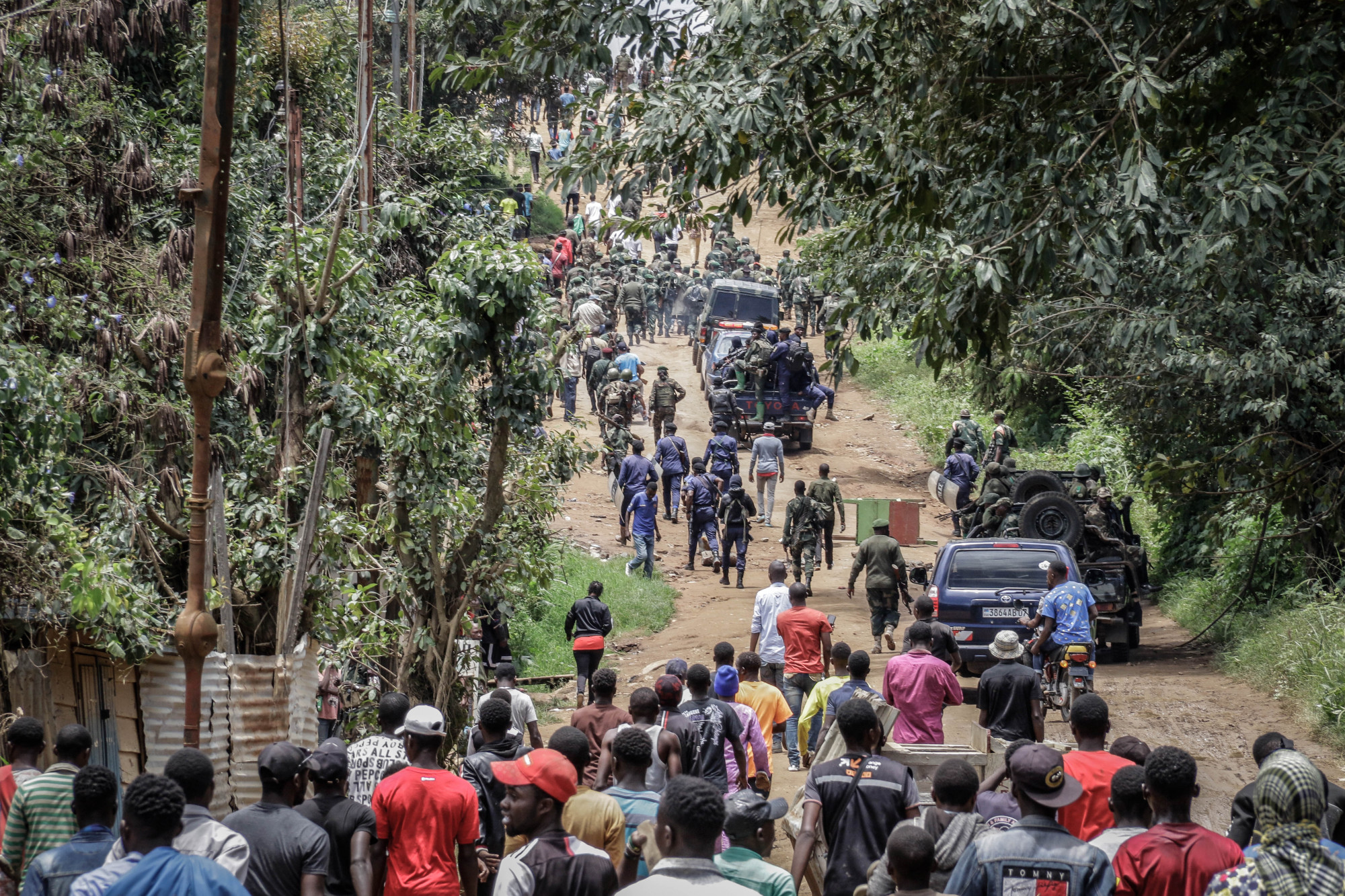

Bunia, September 8, 2020
Reading time:
11 min
Residents here in the capital of Ituri province went into a panic. Attacks, many of them blamed on the Cooperative for the Development of Congo (CODECO), an armed political-religious sect drawn from the Lendu ethnic group, have killed hundreds of civilians the region since March and displaced more than 200,000 people since the beginning of the year, according to Human Rights Watch (HRW). CODECO has committed widespread and systematic killings, beheadings, rapes, and other atrocities that may amount to crimes against humanity, according to the United Nations.
I grabbed my camera and found a motorcycle taxi to drive me toward the centre of town. The driver was afraid to go too far, so I walked the last kilometre to the prison while security forces also rushed to the scene. Outside the prison, a large crowd had gathered near about 100 CODECO fighters, who were now surrounded by soldiers from the Congolese army in a tense standoff.
At first, the soldiers prevented me from approaching the fighters, but an officer eventually allowed me and another journalist to start working. I photographed the encircled militiamen and the growing crowd, as well as nearby streets where youths set up roadblocks to ensure no more militia were sneaking into town.

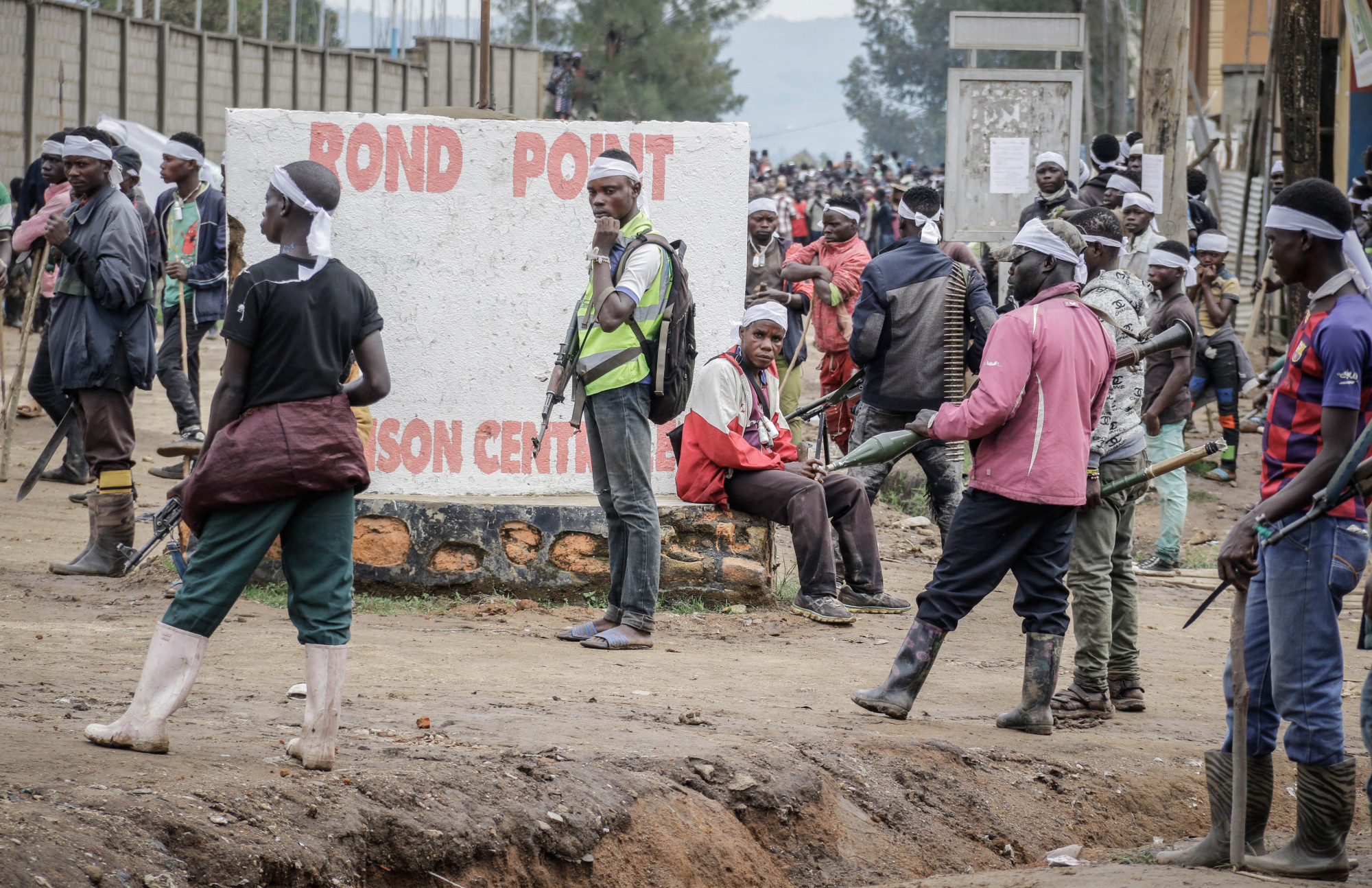
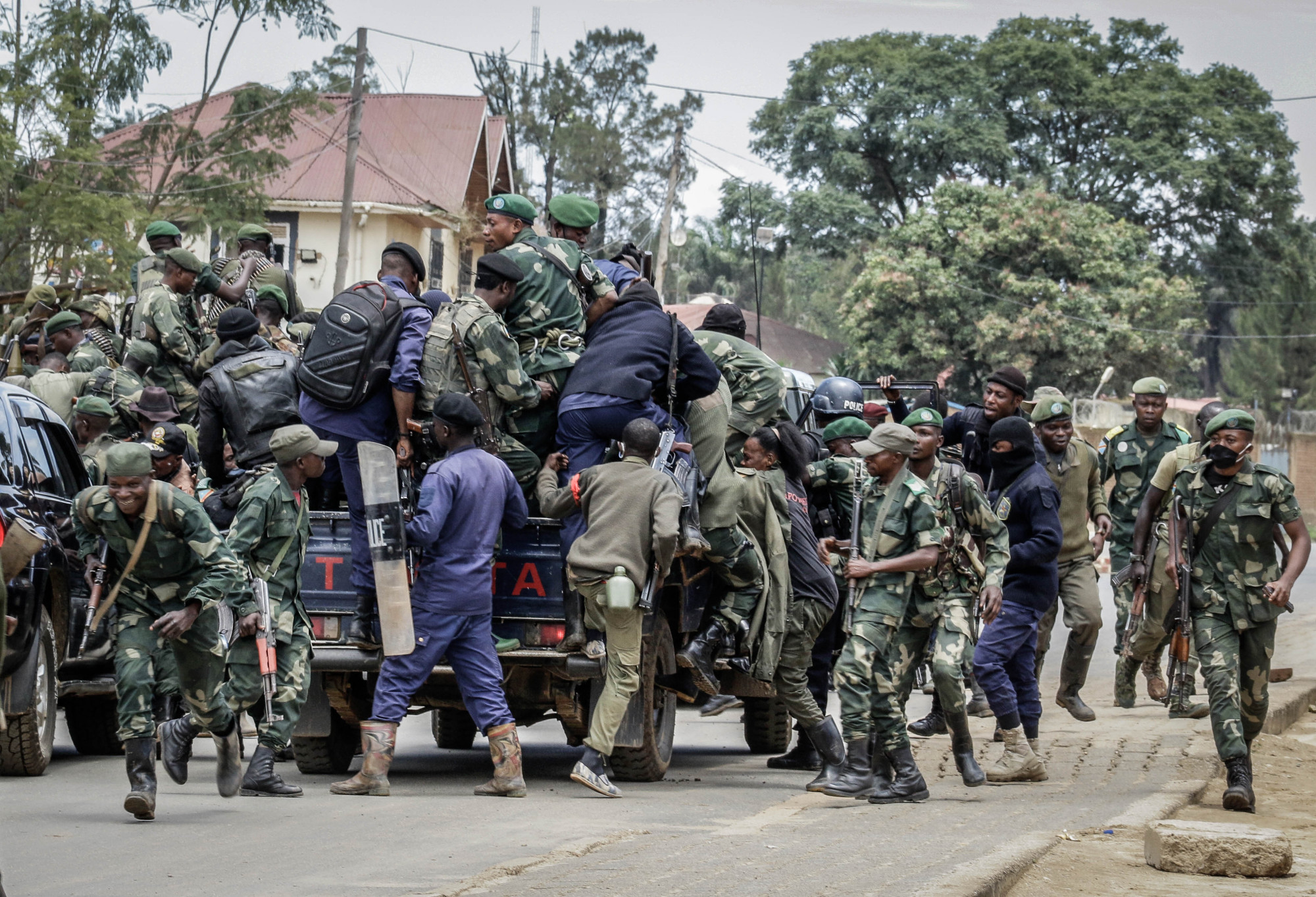
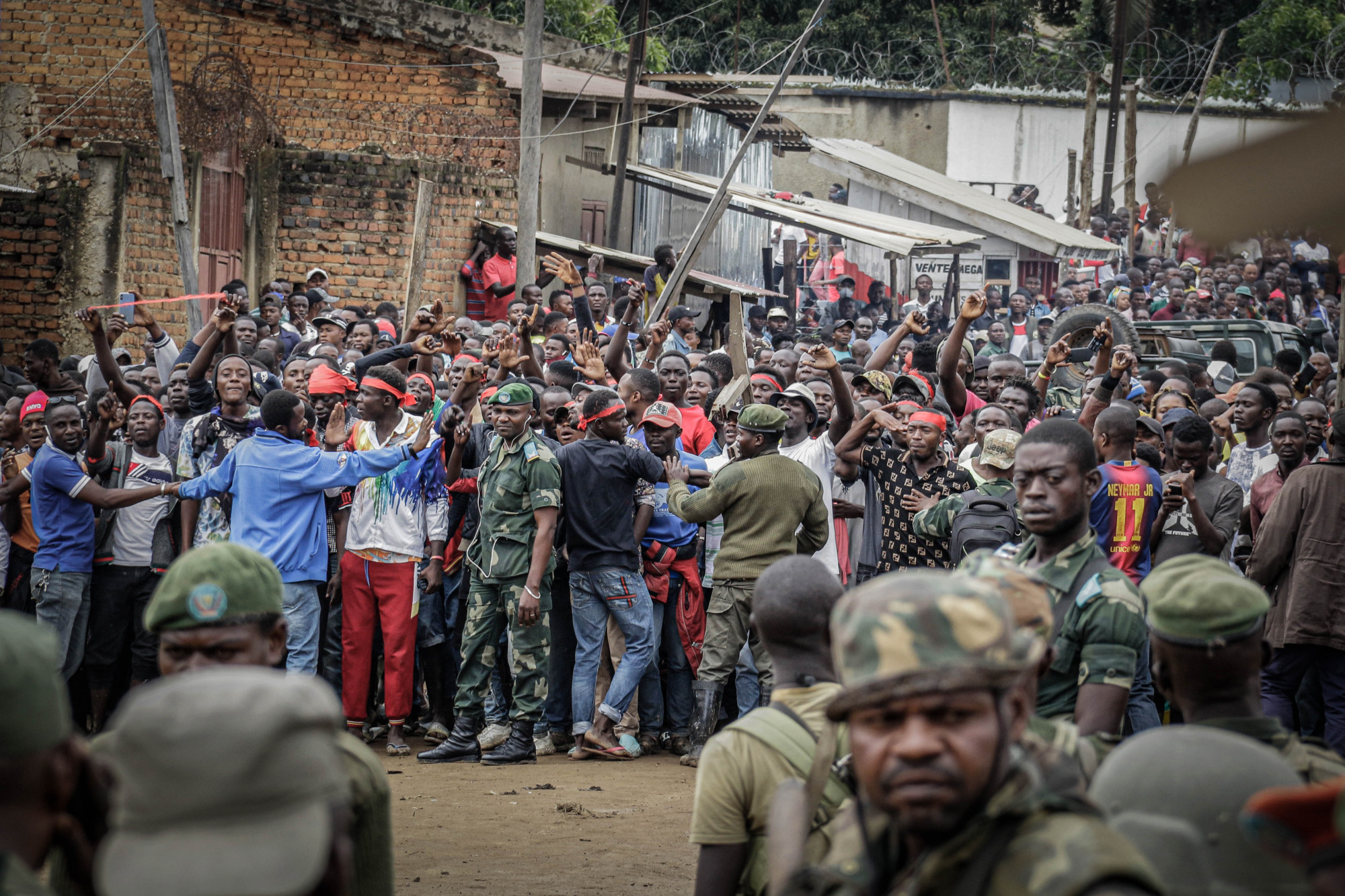
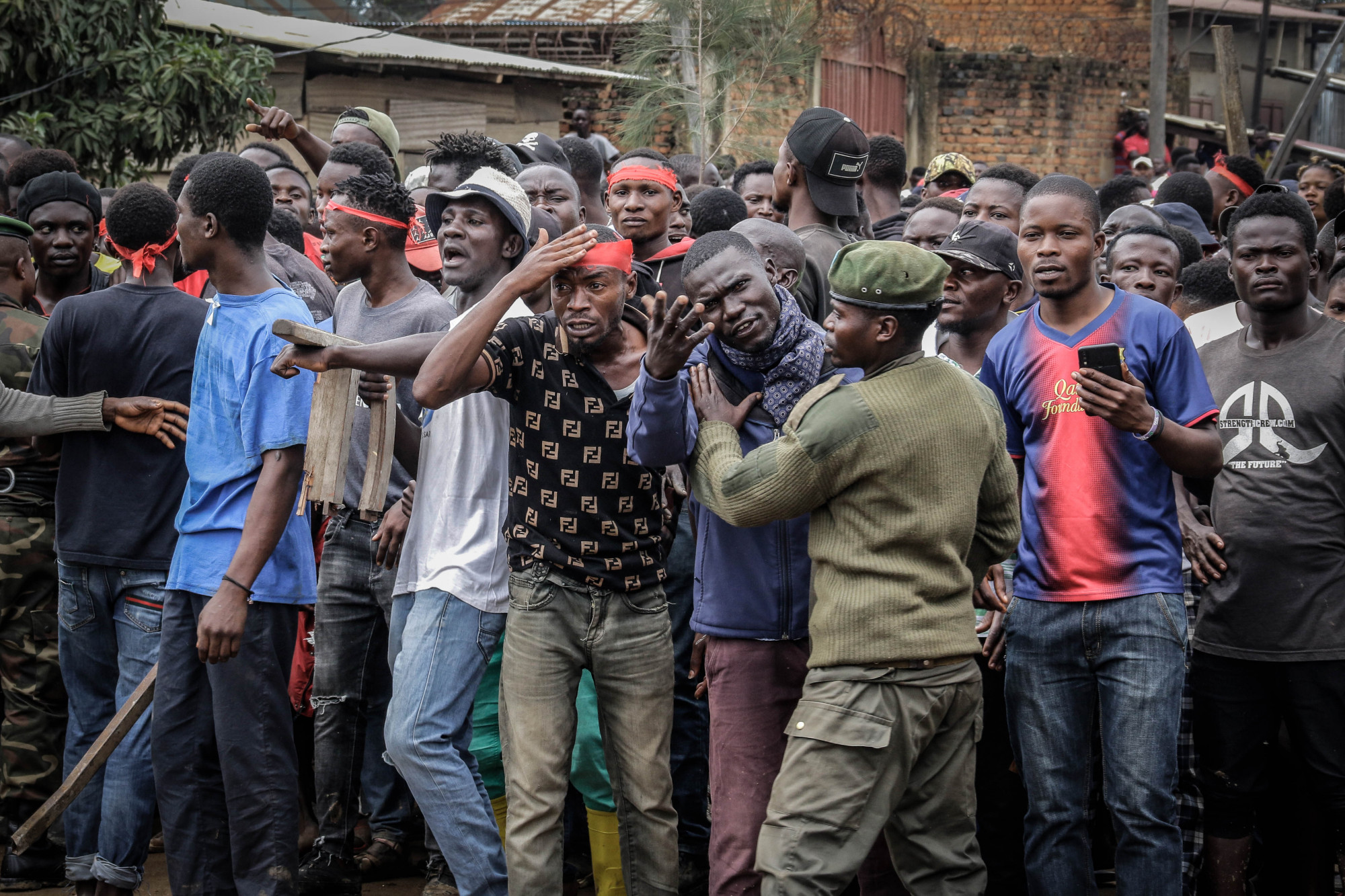
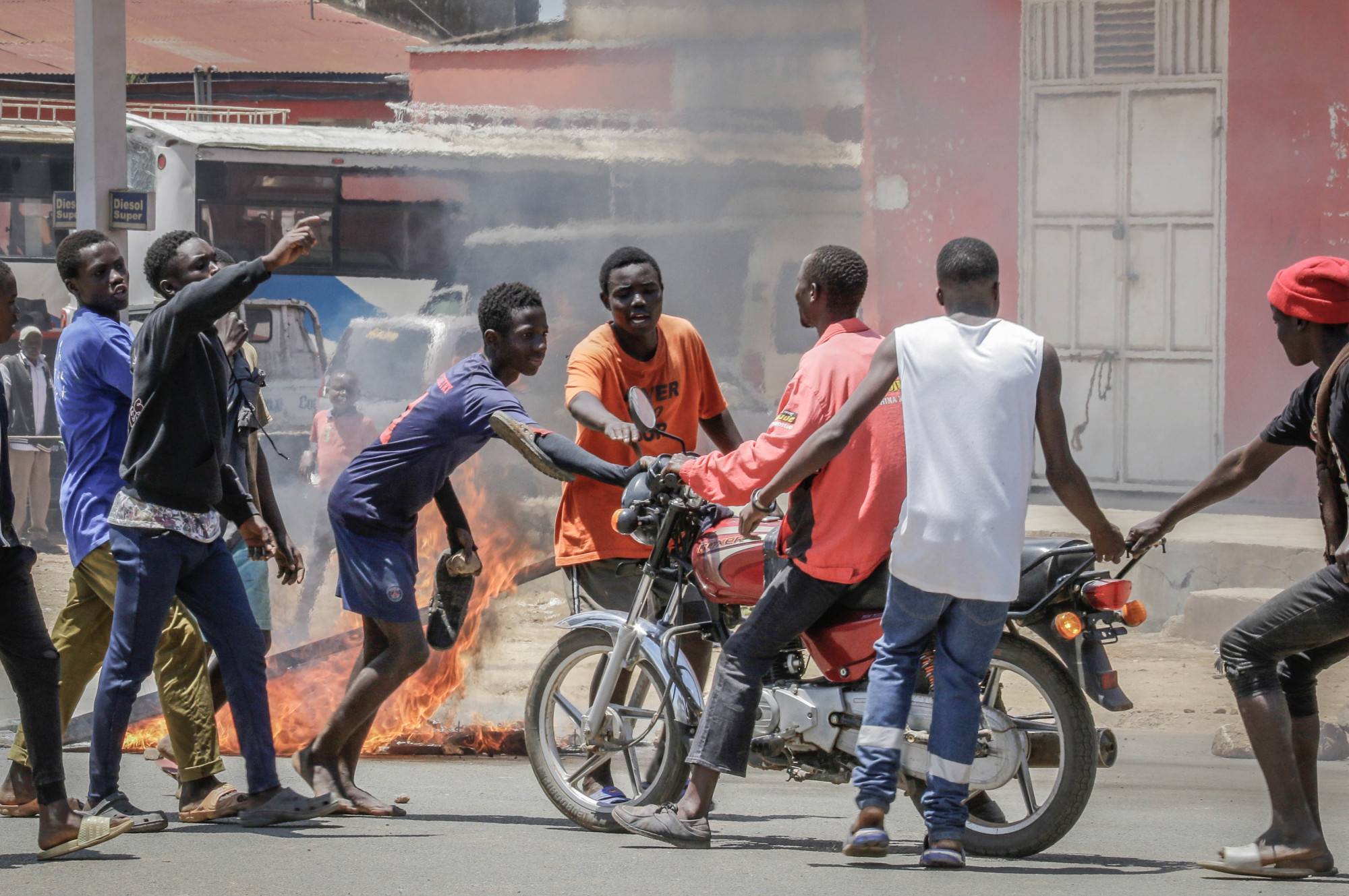
It wasn’t clear what the CODECO fighters wanted at first. Ituri has been blighted by violence for decades and around 60,000 people were killed between 1999 and 2003 in fighting between the Hema, who are predominantly herders, and the Lendu, who are mostly sedentary farmers. There are constant fears that conflict could reignite. Some elements of CODECO, however, agreed to a unilateral ceasefire last month and the white headbands worn by the fighters suggested that perhaps they had come to talk. But the growing crowd of civilians was angry that state security forces had allowed a militia accused of committing massacres and atrocities against their communities to stroll into town uncontested. CODECO fighters and senior army officers spent hours negotiating. The militia asked for money, food rations, and to be demobilized as part of last month’s ceasefire agreement.
“They came saying they want to lay down their arms, you can see them with white banners and white flags showing that they want peace,” Army spokesperson Jules Ngongo told local media. “Where they were grouped together for the (demobilization) process, there is no support and they came to go to the 32nd military region to be taken care of.”
The civilian population was less understanding and began throwing rocks at the CODECO fighters and arguing with police and soldiers, shouting that if security forces were unwilling to protect the town, then they would take matters into their own hands. Some youth, wearing red headbands to distinguish themselves from the militia, picked up wooden clubs to use as weapons and began threatening the militiamen, who brandished their spears and machetes in return.
An army general suddenly arrived and didn’t want any cameras on the scene. He ordered his men to detain me and another journalist. We were grabbed by the soldiers and beaten when we refused to hand over our cameras. They dragged me into an alleyway between two houses and punched me in the back until they tore my camera and my phone from my hands. Then they deleted all my photos, left with my equipment, and detained me for two more hours as the situation with the crowd escalated.
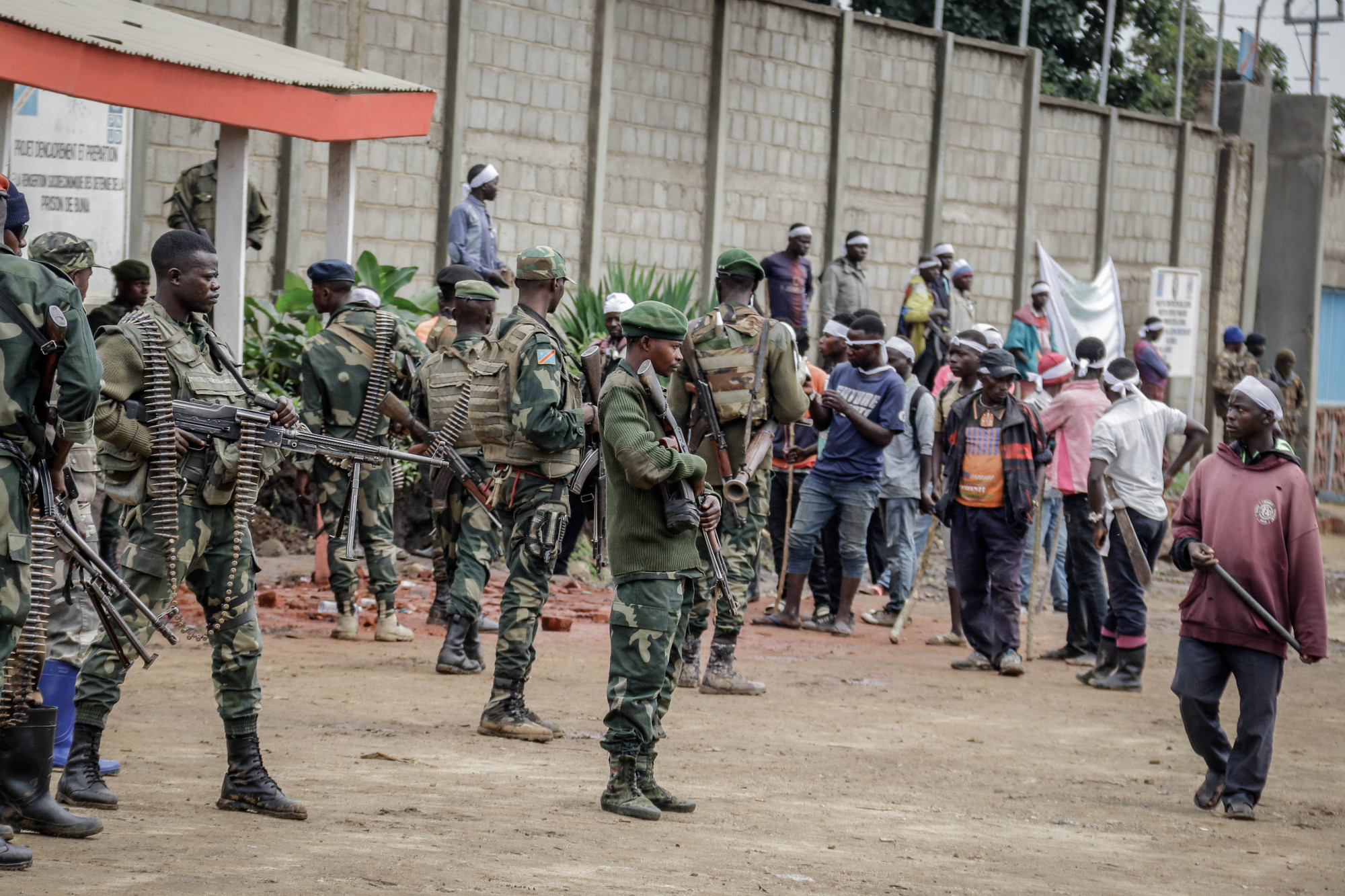
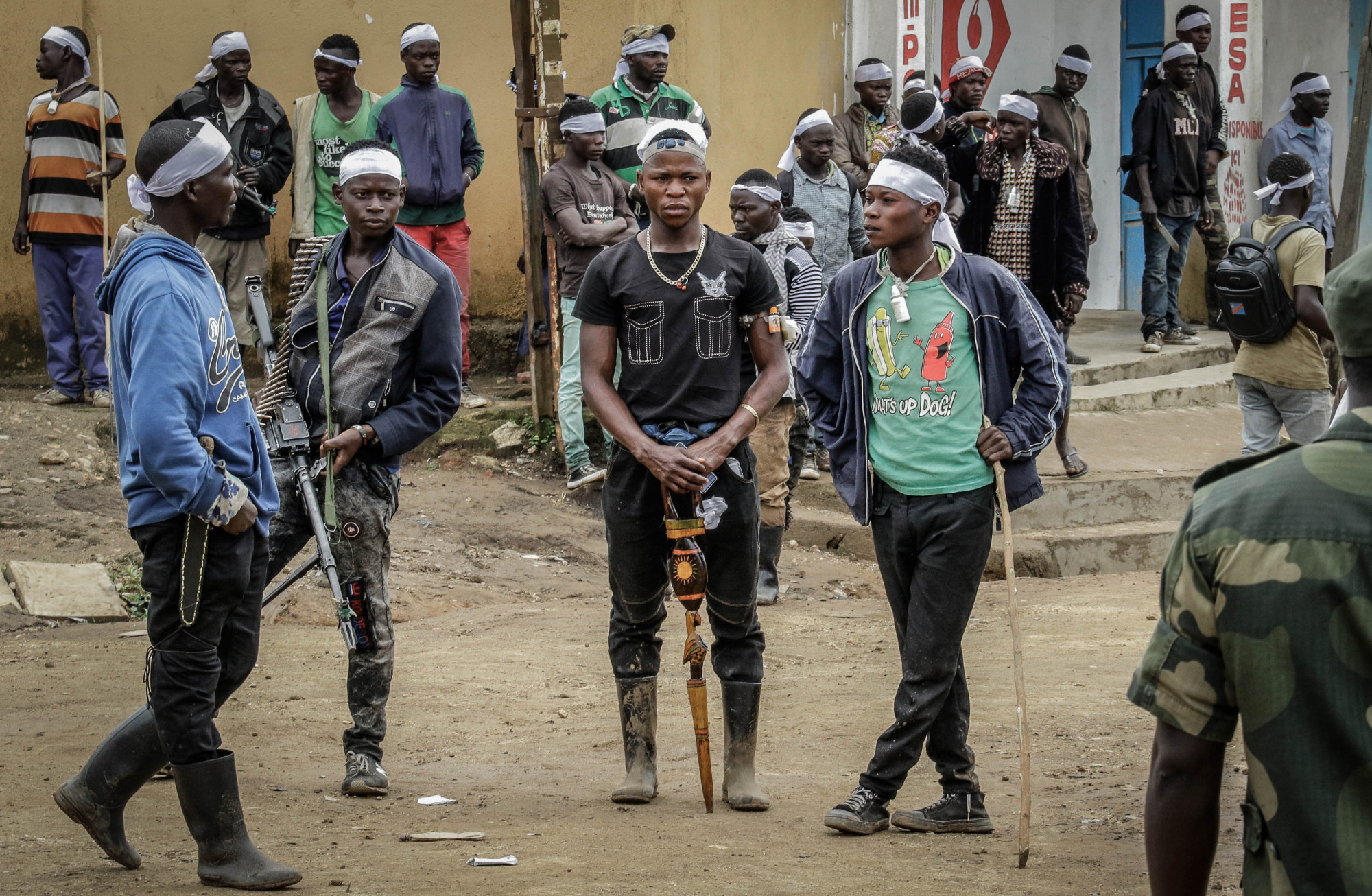

Security forces fired tear gas and live rounds to disperse local youths who became increasingly incensed that the police and army were protecting CODECO fighters when they had so often failed to defend civilians from the killings and massacres carried out by militias.
By early afternoon, the army provided sacks of rice and money to the CODECO fighters. More than 300 alleged CODECO militiamen are jailed in Bunia, according to the director of the central prison, Major Camille Nzonzi, who said none of them were released on Friday.
Eventually, the militia were loaded onto several army trucks and escorted out of town as crowds followed along, jeering.
The United Nations has one of the world’s largest peacekeeping missions in Congo, but did not intervene. Instead it remained on “high alert”. UN officials did help me get my camera and phone back and I was able to recover my images using software.
There has been a lot of confusion since Friday and frustration with government officials and the army. People are upset that they are taxed so heavily by the authorities and get nothing in return while money is going to the militia that has been killing people. There is a lot of anger in the community.
